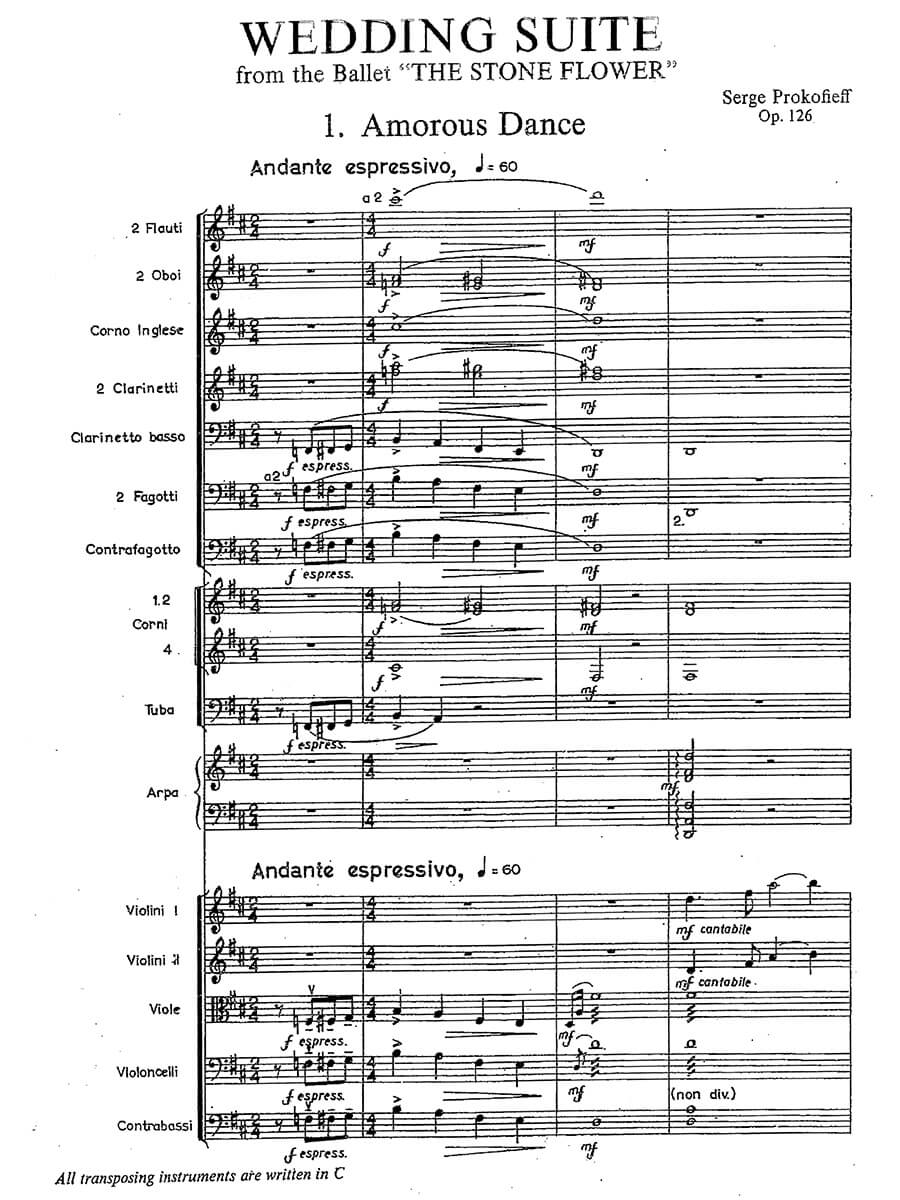Wedding Suite Op.126 for orchestra
Prokofiev, Sergei
27,00 €
Preface
Sergei Prokofiev – Wedding Suite Op. 126
(b. Sontsovka, 27 April 1891 – d. Moskow, 5 March 1953)
Amorous dance p.1
Dance of the fiancée’s girlfriends. p.21
Maidens’ dance p.27
Ceremonial dance p.43
Wedding dance p.49
Preface
The Wedding Suite Op. 126 (1951) was drawn by the composer from his eighth and last ballet, The Tale of the Stone Flower, the third of his three full-length ballets following his return to Soviet Russia after several years spent in the West. Its two predecessors were Romeo and Juliet Op. 64 (1935-6) and Cinderella Op. 87 (1940-44). The Tale of the Stone Flower has not proved as popular as those two works, possibly the story is less well known.
Prokofiev was one of the composers who had been condemned in the notorious Zhdanov decree of 1948, along with Shostakovich, Khachaturian and others, for the crime of ‘formalism,’ which meant art which did not serve a social purpose, as understood by the authorities. Prokofiev wanted to write a national ballet to help rehabilitate himself. This became The Tale of the Stone Flower. The scenario was prepared by Prokofiev’s second wife Mira Mendelson and the choreographer Leonid Lavrovsky from a folk tale recorded by Pavel Bazhof (1879-1950), a writer from the Ural mountains in Russia. He published it first in 1938 in a magazine and then in The Malachite Box, a collection he expanded over several editions from 1936 to 1945. The central character is Danila, an apprentice stone mason. He is told to make a stone cup, which he models after a thorn-apple, but is dissatisfied with it. An old man advises him that the Mistress of the Copper Mountain has a most beautiful stone flower, but that those who see it never return but become servants of the Mistress. Danila’s fiancée Katerina tells him not to pursue the stone flower but Danila does so. He hopes to learn how to make a malachite vase of unearthly beauty. In the original story Danila goes back to his village, destroys his stone cup and is not seen again. In the ballet this is changed to a happy ending in which he is united with Katerina. There is also a villain, Severyan, who, at the end is swallowed up by the ground…
read more / weiterlesen … > HERE
Score Data
| Score Number | 4908 |
|---|---|
| Edition | Repertoire Explorer |
| Genre | Orchestra |
| Pages | 82 |
| Size | 210 x 297 mm |
| Printing | Reprint |
